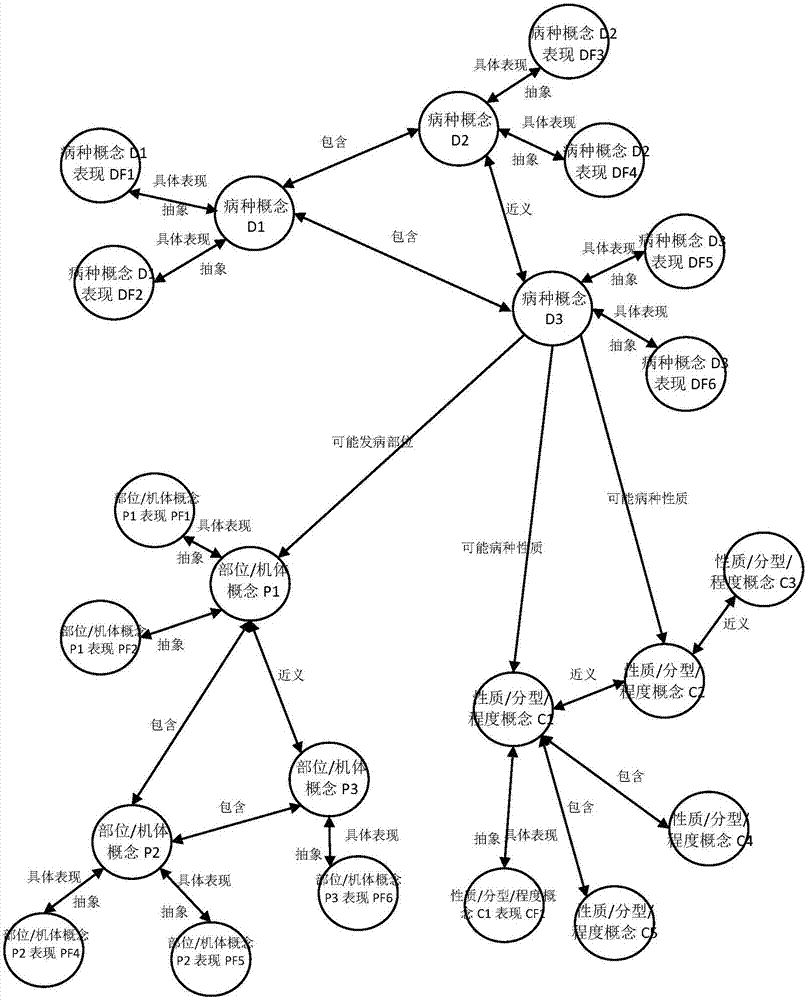Disease classification encoding method and system based on original diagnosis data
A technology for diagnostic data and disease classification, applied in the fields of artificial intelligence and medical informatization, it can solve problems such as incompatibility, inability to guarantee consistency, and inability to guarantee complete uniformity in coding, so as to expand the search scope, eliminate incompatibility and conflict problems, and expand Lenovo Range Effect
- Summary
- Abstract
- Description
- Claims
- Application Information
AI Technical Summary
Problems solved by technology
Method used
Image
Examples
Embodiment Construction
[0093] The present invention will be further described below in conjunction with the accompanying drawings and embodiments.
[0094] Such as figure 1 As shown, the disease classification coding method based on the original diagnosis data includes the following steps:
[0095] Step (1): receiving input data: the input data includes: original diagnostic data;
[0096] Step (2): Preprocessing the input raw diagnostic data;
[0097] Step (3): The preprocessing results obtained in step (2) are searched in GB / T 14396-2016 "Classification and Codes of Diseases" and the International Standard Classification of Diseases code ICD-10 to determine whether the results are obtained. If the results are obtained, then Directly output the encoding result; if not, enter step (4);
[0098] Step (4): Carry out word segmentation processing, associative conversion processing, and search matching tree processing on the preprocessed original diagnostic data, and then select the optimal result from...
PUM
 Login to View More
Login to View More Abstract
Description
Claims
Application Information
 Login to View More
Login to View More - R&D
- Intellectual Property
- Life Sciences
- Materials
- Tech Scout
- Unparalleled Data Quality
- Higher Quality Content
- 60% Fewer Hallucinations
Browse by: Latest US Patents, China's latest patents, Technical Efficacy Thesaurus, Application Domain, Technology Topic, Popular Technical Reports.
© 2025 PatSnap. All rights reserved.Legal|Privacy policy|Modern Slavery Act Transparency Statement|Sitemap|About US| Contact US: help@patsnap.com



